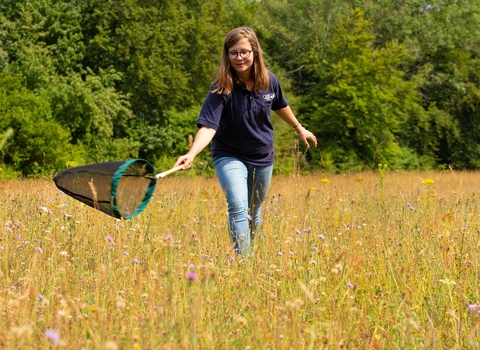We are both interested in future careers related to the environment and are both currently studying Geography and Biology at A Level. We organized a placement with the Surrey Wildlife Trust to increase our understanding of the environmental field and the physical role of humans in the natural world. During our week of work experience, we took part in a number of different activities and saw several different habitats, such as chalk grasslands, heathland and woodland. The SWT team and our fellow volunteers were incredibly supportive and helpful at showing/teaching us all about the tasks we were carrying out, leaving us with an experience we will never forget!
On our first day of work experience, we headed down to Ash Ranges in Normandy to carry out fencing repairs after a fire that occurred a few weeks prior. Before each session throughout the week, there was a debriefing from the team leader; here, they discussed the tasks of the day and the related health and safety precautions. In order to carry out the fencing repairs, we had to trim back the vegetation that surrounded each post. After the debriefing, we headed out to the affected area and got to work! We partnered up with Eleanor who showed us what tools we were going to be using and the areas that we were tackling. The tools included bow saws and loppers to help remove the gorse that surrounded each burnt fence post. Eleanor taught us about the rule of thumb: loppers could not be used on anything larger than your own thumb. We made sure to apply this while clearing. Later in the day, we managed to find a striped ladybird which we were able to identify using Stuart’s identification leaflets.
After clearing for a while, we swapped over to using the drivel to set the wooden poles in place. Unfortunately, we were not able to finish replacing the fencing for the entire perimeter, however, we did manage to get a significant amount done! It was particularly amazing to see how, despite the vast extent of the fire (300 acres), bracken and other small shrubs and trees were already managing to grow back.





